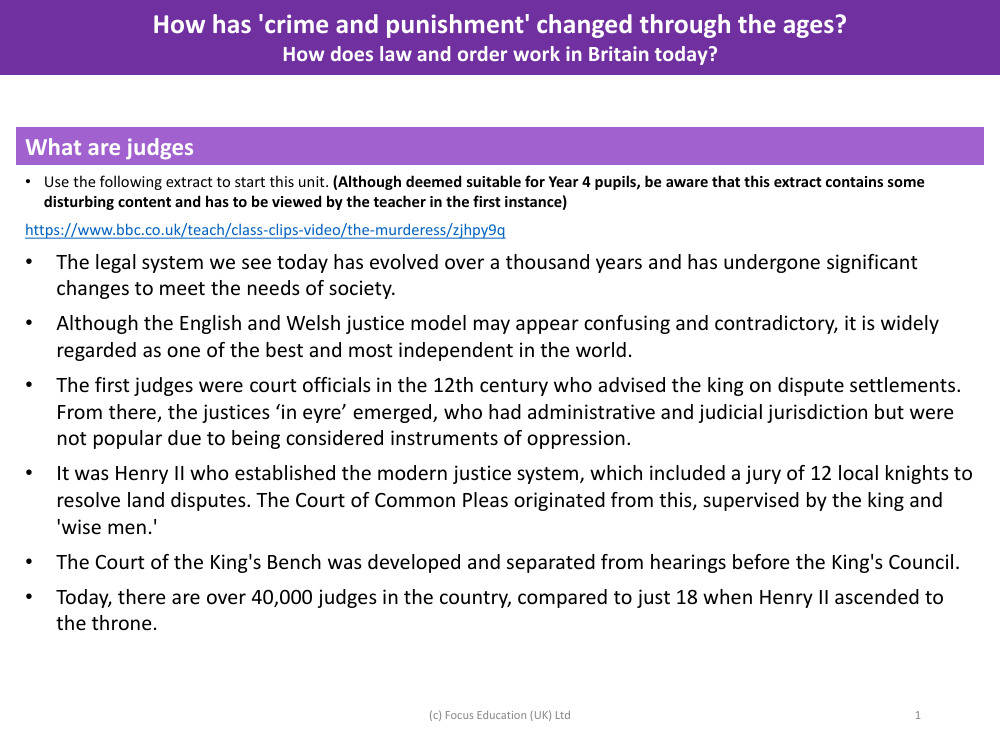What are judges - Info sheet

History Resource Description
Judges are pivotal figures within the British legal system, a system that has evolved over more than a millennium to address the changing needs of society. Initially, judges in the 12th century were court officials who advised the king on resolving disputes. The concept of judges as we understand them today was established by Henry II, who introduced a jury of 12 local knights to settle land disputes, leading to the creation of the Court of Common Pleas. This court was monitored by the king and his 'wise men.' Over time, the judicial system continued to develop, leading to the separation of the Court of the King's Bench from the King's Council. Today, the United Kingdom boasts over 40,000 judges, a significant increase from the 18 present at the beginning of Henry II's reign, reflecting the growth and complexity of the justice system.
The distinctive attire of judges, including the traditional wigs worn in court, dates back to the 17th century. The practice began in the 14th century when King Edward III introduced a royal court dress code. By around 1680, wigs had become part of legal attire, and this trend was popularised by King Charles II, who made them fashionable in polite society. Although wigs fell out of general fashion during George III's reign, they remained a staple in the legal profession. Initially, judges wore full-bottomed wigs, but by the 1780s, the less formal bob wig was adopted for civil trials. While full-bottomed wigs were used in criminal trials until the 1840s, today they are reserved for ceremonial occasions, with smaller wigs being worn for everyday court proceedings.






